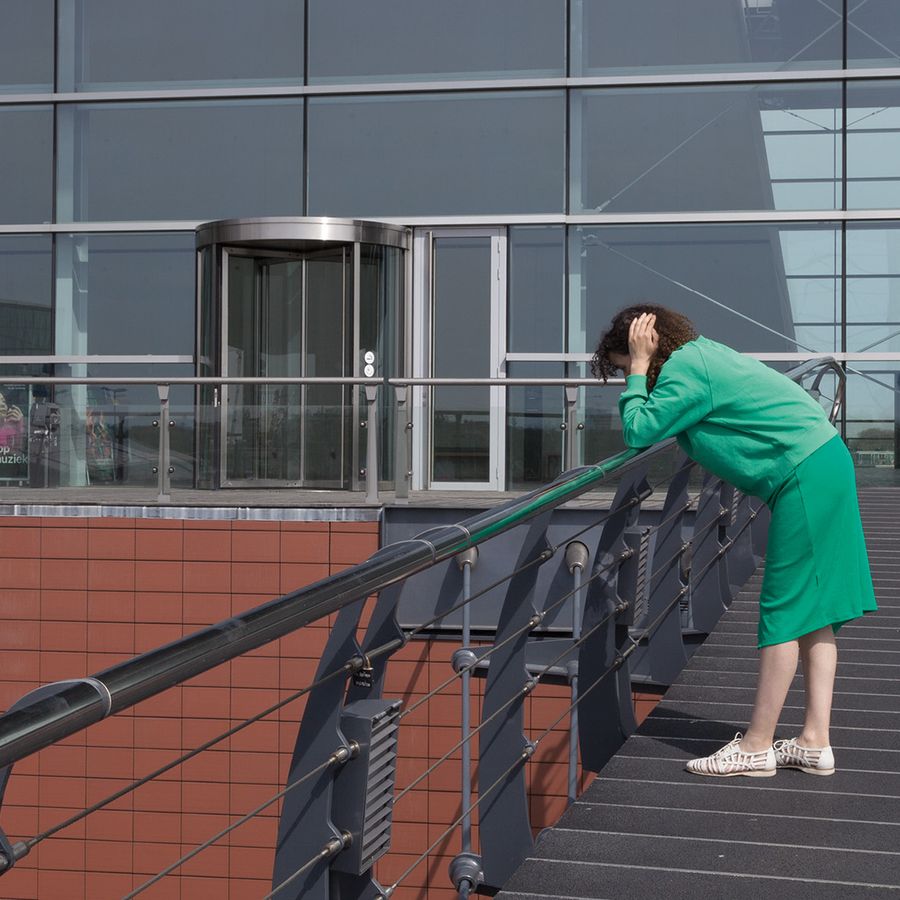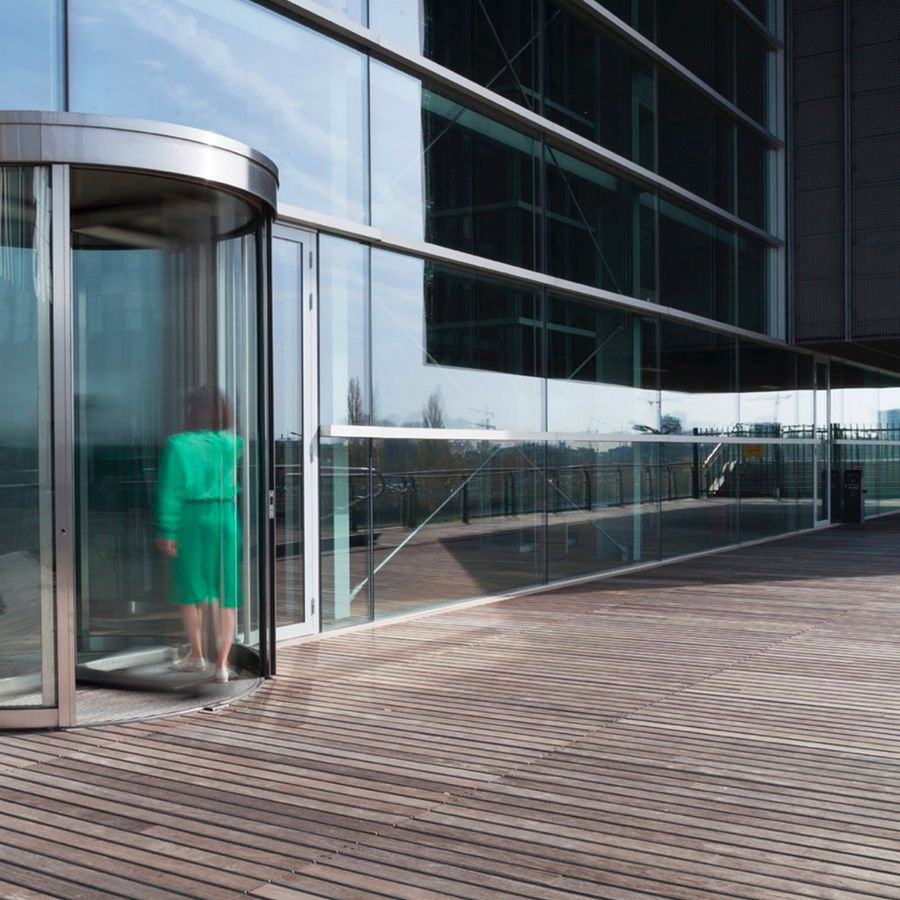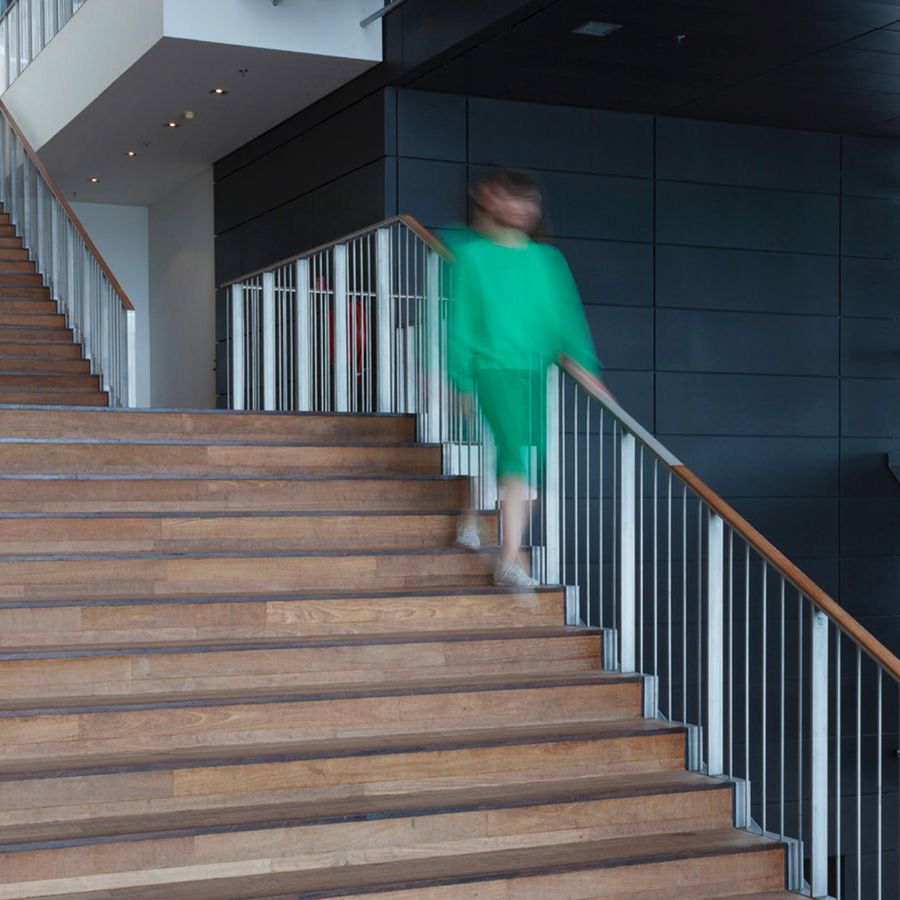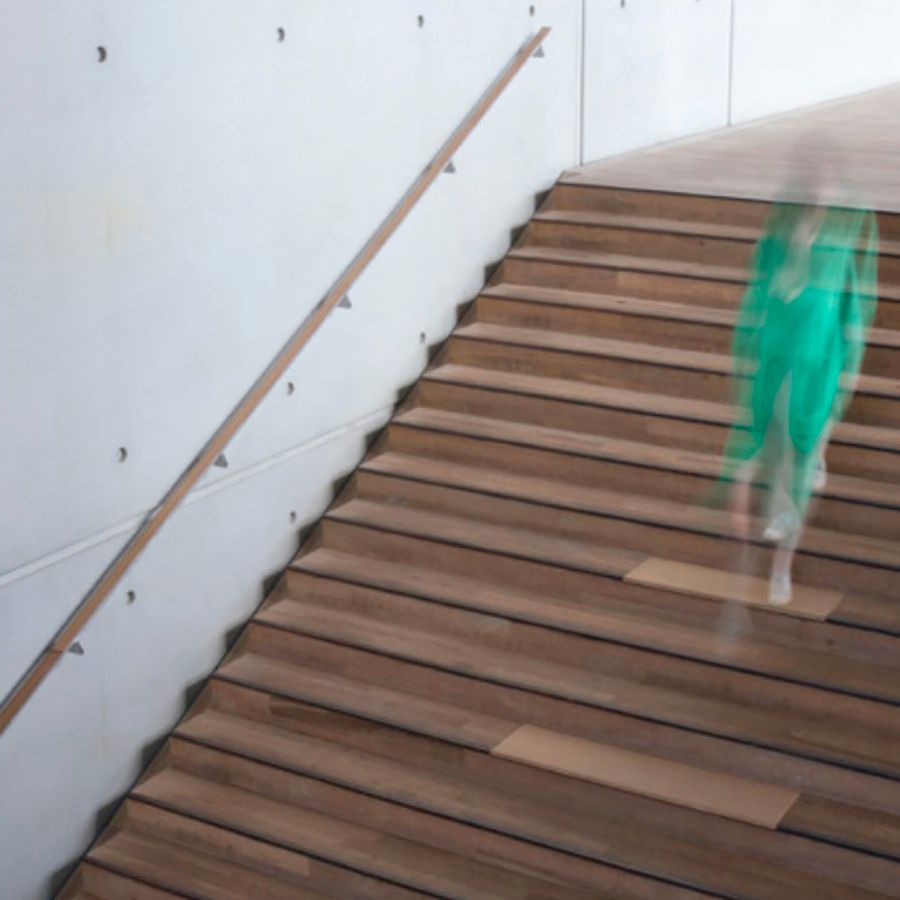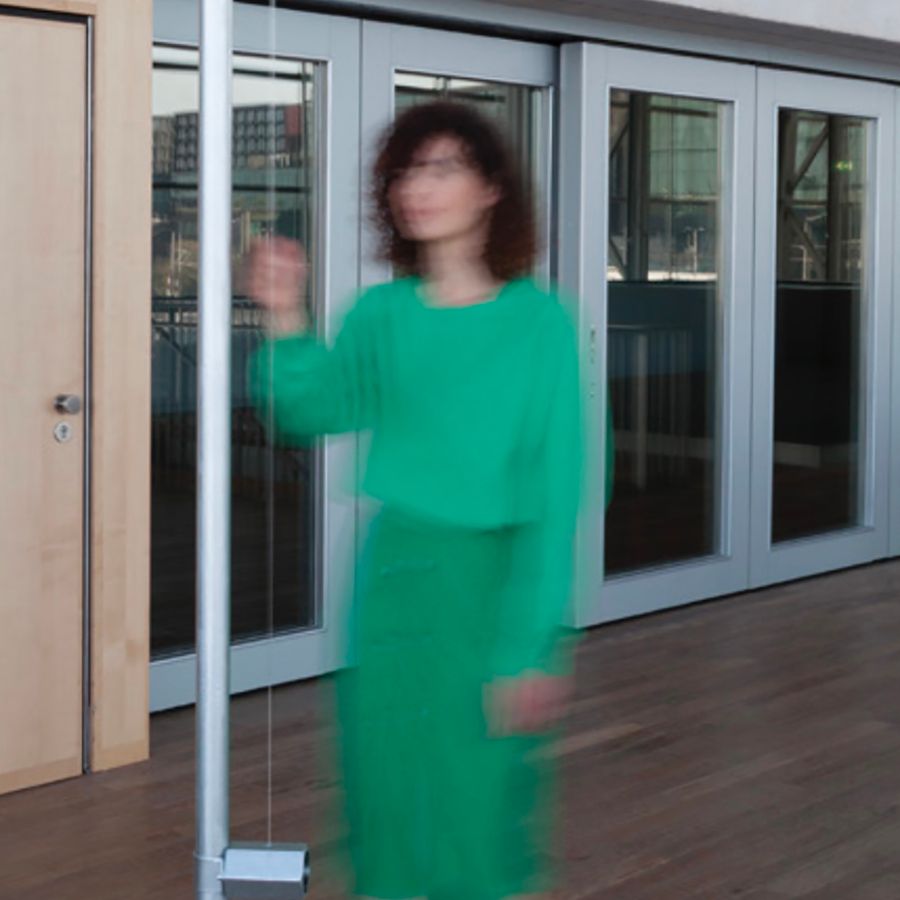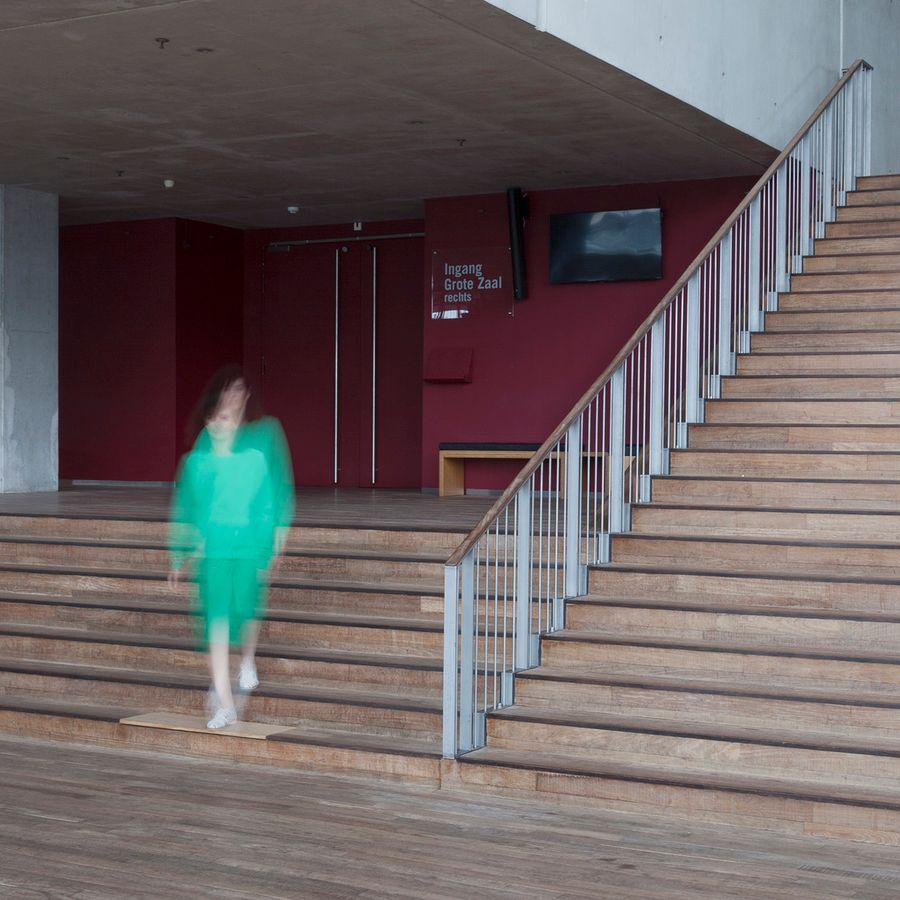
In Fis
The Muziekgebouw as an instrument
- an artwork by Paulien Barbas
As soon as you realize it, you can’t help but pause for a moment. A whistling bridge, a revolving door that sets off a tone, a handrail that hums as your hand passes over it. Visitors discover In Fis as they move through the building.
The Muziekgebouw invited artist Paulien Barbas to create an artwork for its public areas. That resulted in five separate interventions in and around the building. During the process, Barbas collaborated with musicians, as well as woodworkers and metalworkers to produce a surprising environment which includes both sonic and architectural elements. By altering and emphasizing small aspects of the environment, she made sounds become perceptible, making us more aware of our surroundings. This all in musical scale F-sharp, for that is the common denominator of the various interventions.
Together the interventions tell their own story, the story of sounds that have always been there. Intensifying them allows us to hear ourselves in open space. We become part of the space. It all functions as a prelude to that which awaits us when the doors of the auditorium open.
Would you listen
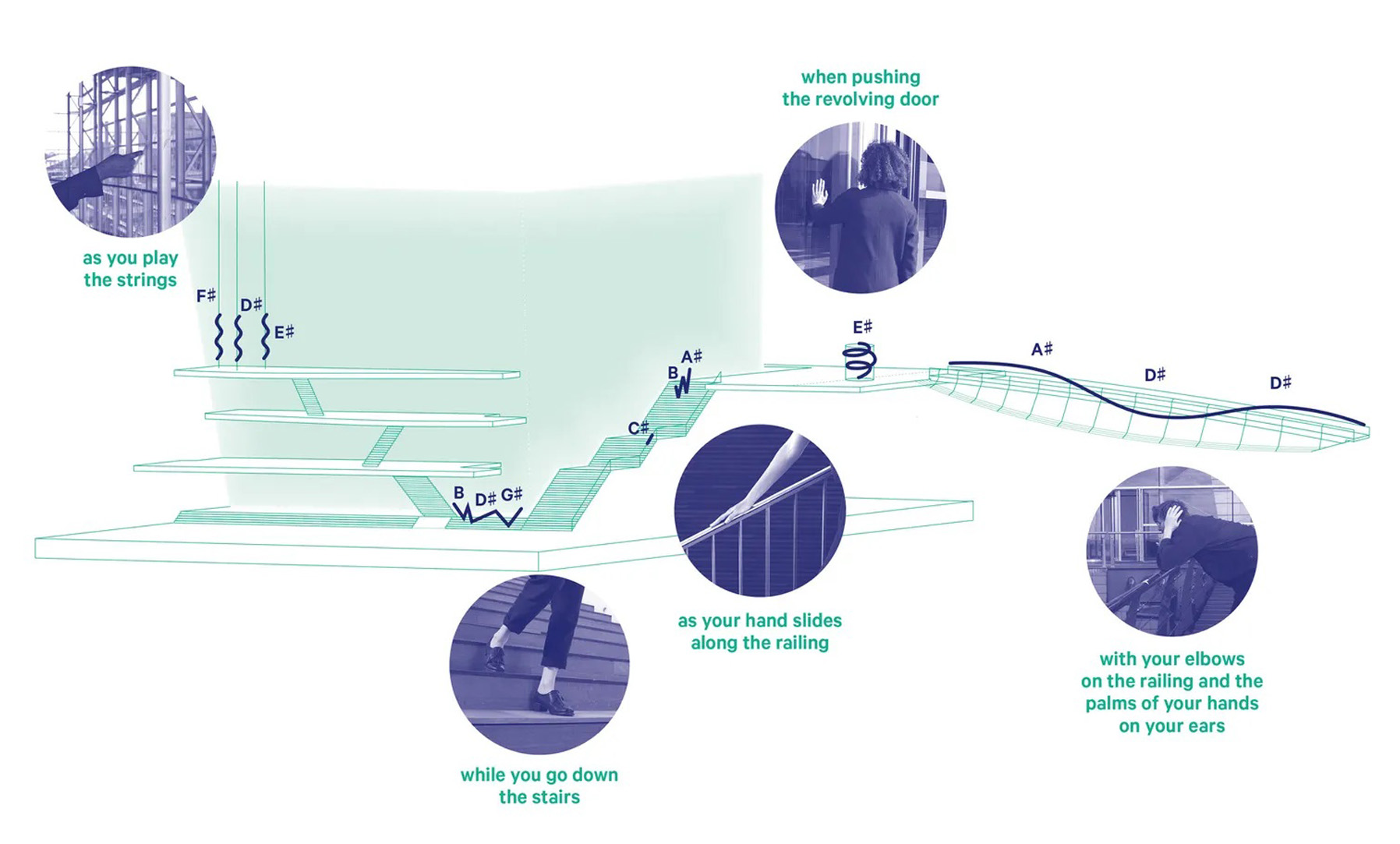
 Bridge
Bridge Revolving door
Revolving door Railing
Railing Stairs
Stairs Strings
Strings"Ambient noise can swamp you, but sound from a direct source, for example a footstep, can actually be illuminating and intimate. Sometimes I let the palm of my hand slide across a concrete wall or along the bannisters flanking a stairs. That produces a fleeting sensation of texture, temperature and sound. At such moments I am no longer at the mercy of the space, but involved in it. I move, and the space gives something in return.The public space at the Muziekgebouw is finished in rough materials. The sound of passing trains, the patter of rain and footsteps on the stairs all tend to blend into one humming noise. The artwork In Fis creates another perception of this space. A perception of rhythm and sound. Sounds disentangle themselves, bringing the space to life, with and by you."
—Paulien Barbas
Biography
Paulien Barbas (1981) is a visual artist. Her work is held in various collections, including Les Abattoirs, Museum of Modern and Contemporary Art in Toulouse (FR) and the Korea Ceramic Foundation (KR). In 2017 she won the silver prize at the Korean International Ceramic Biennale with a sound-work.
Paulien exhibits internationally and has received art commissions from various cultural institutions, including the Bauhaus Foundation Dessau. She studied at the Rietveld Academie, is an alumnus of the Rijksakademie and lives Amsterdam.
Colofon
In Fis Paulien Barbas
Design in collaboration with: Emma van Helden
Metal construction: Paul van Gerwen, Van Gerwen Metaaltechniek
Engineering Zouthavenbrug: Mark IJzerman
Alterations to steps: Wilbert de Joode and Koen Molenaar, WiKo MoJo vof
Engineering steps: Loden Rietveld
Engineering revolving door: Jaromir Mulders and Lefki Mevissen
Finish: Kevin Aerts
Photography: Paulien Barbas
Introduction text: Roos Menkhorst
In Fis was made possible by:
Special thanks to:
EKWC, Make Eindhoven, Nationaal Glasmuseum en STEIM
In addition, thanks for invaluable help and advice:
Carla Hoekendijk, Malcolm Einstein, Jim McCarthy, Ferdinand van de Berg, Erik Winkel, Maarten Hornikx, Gulliver Nice, Michiel Barbas, Chaim Achttienribbe, Lieke Maier, Winnie Mensink, Joshua Krosenbrink, Maaike van der Sluijs Veer





